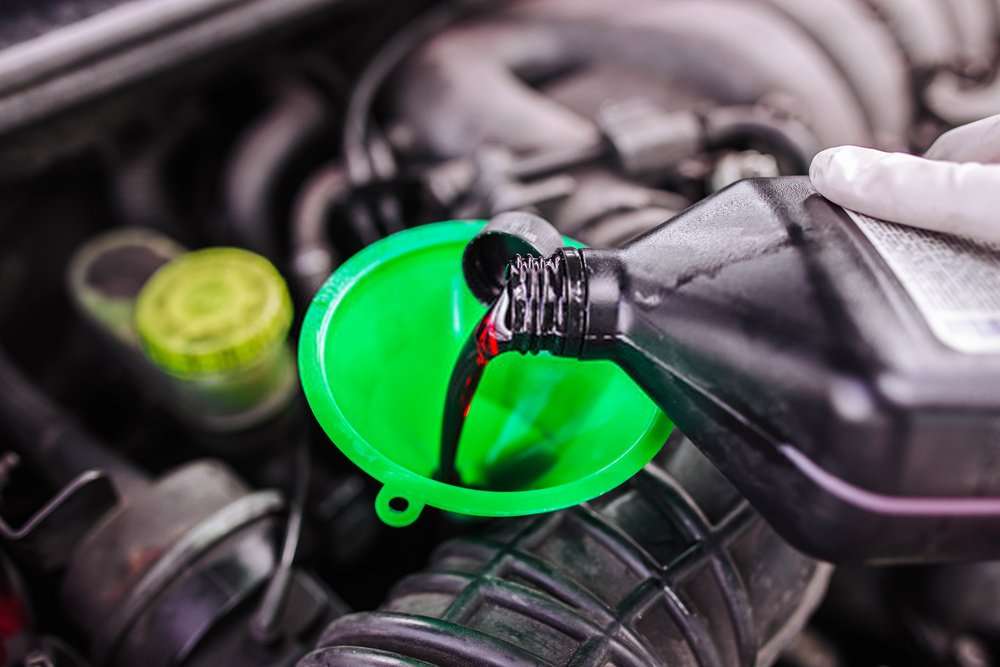One of your vehicle’s most vital fluids is the transmission fluid. Keeping it clean enables your transmission to absorb and dissipate heat efficiently while ensuring consistent shifting, keeping gears from grinding when engaging, and many other important functions.
Transmission fluid helps in delivering the torque generated by the engine to the wheels by reducing how much friction there is between the gears and bearings and reducing transmission problems.
You change your engine oil all the time. But when it comes to a transmission fluid change, your dealer may tell you that it depends on how much you drive.
How often should you change your transmission fluid – many car manufacturers recommend that every 30,000 miles your transmission oil is changed. There are also those who say you should change the transmission fluid and filter every 50,000 miles.
If your vehicle is used for commuting and short trips, then you might go through a greater number of miles before a recommended transmission fluid change.
The transmission fluid lubricates the gears in your car. But luckily for you, they don’t need too much lubrication. This is because it is constantly reapplied as you drive. In fact, most fluids in your car are recycled and used over and over again. The transmission fluid in your car does need to be changed periodically.
Jump to
- 1 How often should you change your transmission fluid – A Complete Guide
- 2 What should be the change interval of Automatic Transmission Fluid and Manual Transmission Fluid
- 3 FAQ’s
- 3.1 What is the general recommendation for changing transmission fluid?
- 3.2 Is it necessary to change my transmission fluid if my car has high mileage?
- 3.3 What are the signs that my transmission fluid needs changing?
- 3.4 Can I change my transmission fluid myself?
- 3.5 What happens if I don’t change my transmission fluid?
- 4 Conclusion
How often should you change your transmission fluid – A Complete Guide
Changing the transmission fluid is not a difficult job, though, because it is just as simple as changing your level of engine oil.
There are a few unique steps to checking out your transmission fluid and when to change it.
Step 1: First of all, you need to make sure that the transmission fluid is at its proper level. Check your vehicle’s manual for this information, or look for a sticker on the driver’s side door jamb.
Step 2: If it needs to be changed, you will have to open up the hood and check out the transmission fluid. There should be a cap on top of the fluid reservoir for you to take off.
Step 3: Once you have taken off the cap, check out your level using a dipstick and fill it accordingly. Make sure not to overfill it as it will cause leaks later in your transmission. Then make sure you re-screw everything back in place.
Step 4: If you see that your dipstick shows signs of red or pink color, then it is time for a transmission flush. It needs to be changed every once in a while so that the transmission fluid can flow efficiently through your car’s system. Check if there are any solids inside the fluid. If you see any, then the transmission fluid is dirty and needs to be changed to new fluid immediately.
Step 5: There are instances when your fluid will need to be changed more than once a year in some cars. It depends on how often you drive through extreme temperatures and if you frequently engage in high-stress activities like towing or hauling heavy loads. This also applies to any other type of extreme activity.
Step 6: Your transmission oil will also need to be checked if your car has had a major repair or when you change the differential oil as they can leak and contaminate your transmission fluid. It is very important that this is done right after adding them to ensure that there are no leaks in your system.
Step 7: It will also need to be checked if your transmission is slipping. This can be a sign of worn seals or gaskets, causing the fluid to leak and contaminate other systems in your car. It could also mean that there is a problem with your transmission as well.
Step 8: It’s important that you keep checking and replacing your transmission fluid every year or so. It is very important for your car to run smoothly without any problems, especially when you are driving on an interstate or through rough roads with steep inclines. When you don’t change your transmission oil regularly, you may end up with major problems.
Note: If you have noticed any problems with your transmission, it is best to have it inspected by a professional to determine the cause of your problem.
What should be the change interval of Automatic Transmission Fluid and Manual Transmission Fluid

Automatic Transmission Fluid
Every vehicle is a little different, but here’s what you should know about checking and changing your car’s automatic transmission fluid. Doing regular automatic transmission fluid (ATF) changes is one of the best ways to maintain your vehicle’s transmission. Why You Should Change Automatic Transmission Fluid Every 30,000 to 50,000 miles.
Manual Transmission Fluid
You must change the manual transmission fluid as soon as possible because any delay will only result in more wear and tear on the internal parts.
Fluid changes ensure that your transmission will shift better, feel smoother, reduce heat buildup, and generally feel more responsive to your gear selection.
Hence, it is recommended that you should change the Manual Transmission fluid every 20,000 to 25,000 miles.
Can I Change My Transmission Fluid by Myself?
Yes, If you’re taking an extended trip, you might consider not running your transmission. To save yourself the cost of replacing your transmission fluid during a long trip, it is usually better to drain it beforehand and refill it with the correct fluid before you leave on your trip.
What if I Don’t Change the Transmission Fluid?
Checking the transmission fluid in your vehicle is an important maintenance task that must be done regularly. If you don’t, you run the risk of damaging your transmission components, such as seals and gaskets. It is important to change because it keeps the transmission gears and shafts free from rust, dirt, corrosion, or overheating.
FAQ’s
What is the general recommendation for changing transmission fluid?
The recommended interval for changing transmission fluid varies depending on the make and model of your vehicle, your driving habits, and the type of transmission fluid used. Generally, manufacturers suggest changing transmission fluid every 30,000 to 60,000 miles. However, some newer vehicles with advanced transmissions may have longer intervals, up to 100,000 miles. Always refer to your vehicle’s owner’s manual for the most accurate information.
Is it necessary to change my transmission fluid if my car has high mileage?
Yes, even high-mileage vehicles require transmission fluid changes. In fact, older vehicles may benefit from more frequent transmission oil changes to help extend the life of the transmission. However, if your high-mileage vehicle has never had a fluid drained and refilled with fresh fluid based on the vehicle manufacturer recommendations, then it’s best to consult a professional mechanic as a sudden change could potentially cause issues.
What are the signs that my transmission fluid needs changing?
Signs that your transmission fluid may need changing include difficulty shifting gears, slipping gears, surges in the vehicle’s speed, and unexplained noises from the transmission. Also, if the transmission fluid is dark, dirty, or has a burnt smell when you check it, it’s likely time for a change.
Can I change my transmission fluid myself?
While it’s possible to change your own transmission fluid if you’re comfortable with vehicle maintenance tasks, it can be a messy and complex job that involves getting under the vehicle and safely disposing of old transmission fluid. For a transmission fluid flush, specialized machinery is required, making it a task best left to professional mechanics.
What happens if I don’t change my transmission fluid?
Failure to change your transmission fluid can lead to a buildup of sludge and debris in the transmission, potentially causing erratic shifting, overheating, and eventually, complete transmission failure. Regular transmission fluid changes are an important part of maintaining your vehicle’s performance and longevity.
Conclusion
Hopefully, the information you now have will help keep your transmission running smoothly and in top working condition for some years to come.
Transmission fluid can be expensive, but it is much better to spend the money now rather than waiting for a problem with your transmission. Or even worse, a broken-down car on the side of the road. Keep up to date with your car’s maintenance schedule.

My name is Tom Harris, founder of this blog. I’m a mechanical engineer with 20 years of experience in the automotive industry. I’m here to help you with your vehicle’s problems, easy fixes and share my insights and experience so that you can enjoy your rides more.


2 thoughts on “How Often Should You Change Your Transmission Fluid”